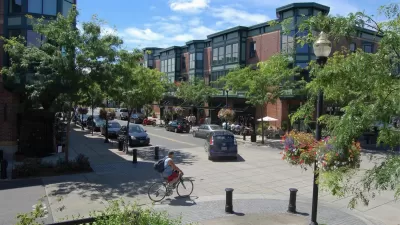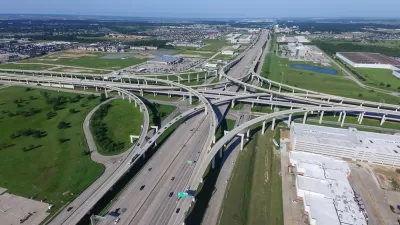A Vox video digs into the history of how suburbs came to resemble each other.
"If you’ve visited a suburb, you’ve probably noticed a similar look: same curving streets, same culs-de-sac. It’s not an accident. In fact, this appearance of the suburbs was part of the Federal Housing Administration’s plan," writes Phil Edwards to introduce the video shared above.
"In the 1930s, the Federal Housing Administration (FHA) was the financial engine behind most home development. To ensure their investments were safe ones, they strongly recommended that builders and developers comply with the ideals they set. Those regulations aligned closely with the values of the time, including segregation and a burgeoning car culture."
FULL STORY: Why so many suburbs look the same

Trump Administration Could Effectively End Housing Voucher Program
Federal officials are eyeing major cuts to the Section 8 program that helps millions of low-income households pay rent.

Planetizen Federal Action Tracker
A weekly monitor of how Trump’s orders and actions are impacting planners and planning in America.

Ken Jennings Launches Transit Web Series
The Jeopardy champ wants you to ride public transit.

Crime Continues to Drop on Philly, San Francisco Transit Systems
SEPTA and BART both saw significant declines in violent crime in the first quarter of 2025.

How South LA Green Spaces Power Community Health and Hope
Green spaces like South L.A. Wetlands Park are helping South Los Angeles residents promote healthy lifestyles, build community, and advocate for improvements that reflect local needs in historically underserved neighborhoods.

Sacramento Plans ‘Quick-Build’ Road Safety Projects
The city wants to accelerate small-scale safety improvements that use low-cost equipment to make an impact at dangerous intersections.
Urban Design for Planners 1: Software Tools
This six-course series explores essential urban design concepts using open source software and equips planners with the tools they need to participate fully in the urban design process.
Planning for Universal Design
Learn the tools for implementing Universal Design in planning regulations.
Heyer Gruel & Associates PA
Ada County Highway District
Institute for Housing and Urban Development Studies (IHS)
City of Grandview
Harvard GSD Executive Education
Toledo-Lucas County Plan Commissions
Salt Lake City
NYU Wagner Graduate School of Public Service





























